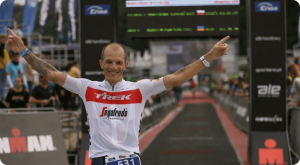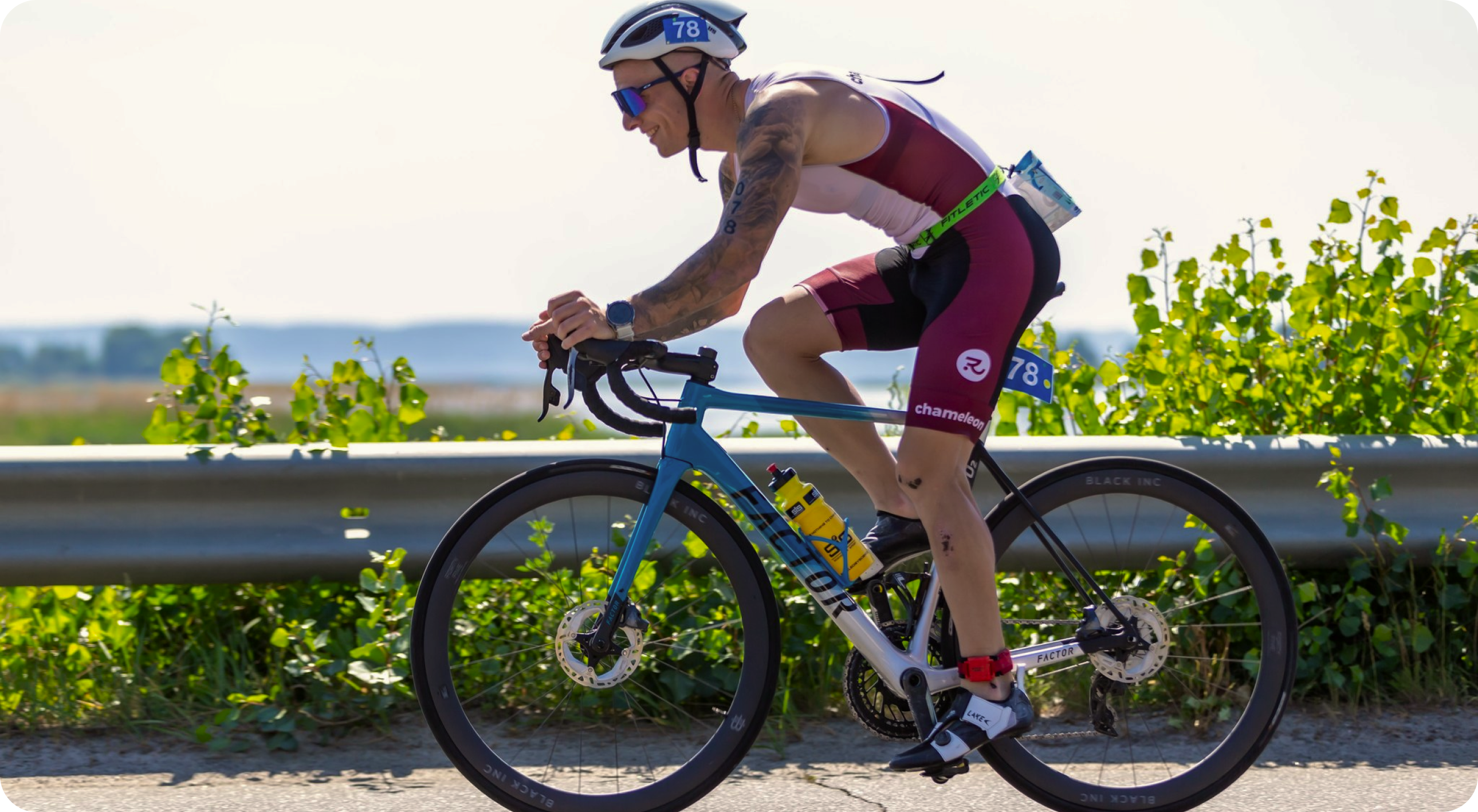Triathlons are challenging endurance races that require athletes to swim, bike, and run.
If you are serious about achieving your triathlon goals, following a training plan is essential.
A training plan will help you to gradually increase your fitness level, improve your performance, and reduce your risk of injury.
There are many different types of training plans available, but not all of them are created equal.
It is important to choose a plan that includes all three triathlon disciplines and is appropriate for your fitness level, experience, and race goals.
If you are unsure how to choose the best triathlon training program, talk to a triathlon coach or experienced triathlete.
In this article, we will discuss the importance of training plans for triathletes, how to choose the best triathlon training program, and how to use it effectively.
We will also provide training tips to help you create a personalized training plan.
So let’s start together!
Increase your endurance
Embark on a journey to peak performance with our comprehensive triathlon training programs. Unlock your full potential and conquer every race!
What about Statistics?
Here are some statistics about triathlon plans:
A study by the Journal of Strength and Conditioning Research found that triathletes who followed a structured training plan improved their performance by an average of 10%.
Another study, published in the Journal of Sports Science & Medicine, found that triathletes who followed a training plan were more likely to achieve their race goals.
The study found that 85% of triathletes who followed a training plan finished their race within their goal time.
A survey of triathletes by Triathlon Business International found that 72% of triathletes use a training plan.
The most common type of training plan used by triathletes is a weekly plan (63%).
In the next section, we will talk about the general idea of the types of triathlon plans.
The Triathlon Spectrum: Understanding Your Options
Triathlons are a sport that caters to a wide array of individuals with varying levels of expertise and ambitious goals.
Within this diverse landscape, there are three primary categories: Sprint, Olympic, and Ironman.
1. Sprint
The Sprint category is an ideal starting point for those new to the sport.
Sprint training plan for triathlon is typically the shortest in distance and require participants to complete a 750-meter swim, a 20-kilometer bike ride, and a 5-kilometer run.
While these races may be shorter, they are by no means less challenging.
2. Olympic Distance Triathlon
In contrast, the Olympic category offers a more balanced test of endurance and speed.
Olympic triathlons typically encompass a 1.5-kilometer swim, a 40-kilometer bike ride, and a 10-kilometer run.
This category caters to athletes who desire a significant challenge while still maintaining a manageable distance.

3. Ironman
The Ironman category represents the pinnacle of triathlon achievement.
With its grueling distances, an Ironman triathlon consists of a 3.86-kilometer swim, a 180.25-kilometer bike ride, and a full marathon run of 42.2 kilometers.
Ironman races push participants to their limits, both physically and mentally.
It’s important to understand that the choice of a training plan for a triathlon significantly depends on the distance you’ve chosen to tackle.
In the following section, we’ll delve into the specifics of sprint triathlon training plans, shedding light on the foundation that sets novices and time-conscious athletes on the path to success.
Tailoring Your Triathlon Training Plan: Hybrid Training Approaches
While standard training plans cater to specific triathlon distances, many triathletes find success through a more flexible approach known as hybrid training.
Hybrid training combines elements from different plans to create a personalized regimen that aligns with an athlete’s unique goals, strengths, and weaknesses.

What Is the Concept of Hybrid Training Plans?
A hybrid training plan for triathlon offers triathletes the freedom to customize their training experience.
They break away from the rigidity of standard sprint distance, Olympic, or Ironman plans and allow athletes to cherry-pick workouts and strategies that best suit their needs.
Whether it’s focusing on swim technique from an Olympic triathlon training plan, bike endurance from an Ironman routine, or run speed from a sprint plan, hybrid training encourages versatility.
How Triathletes Can Combine Elements from Different Plans?
The process of creating a hybrid training plan involves a deep understanding of one’s strengths and areas for improvement.
Beginner triathletes can identify the following components:
1. Strengths
Recognize the disciplines or aspects of training where you excel.
For instance, if your swimming is exceptional, you can incorporate more swim workouts from the Olympic plan.
2. Weaknesses
Acknowledge the disciplines or areas where you need more work.
If you struggle with long-distance cycling, you might integrate the bike workouts from an IRONMAN plan to build endurance.
3. Goals
Clearly define your triathlon goals.
Whether it’s improving your overall performance, enhancing your swim time, or increasing your running speed, your hybrid plan should reflect these objectives.
4. Time and Commitment
Consider your schedule and the time you can realistically allocate to training.
This will influence the volume and intensity of workouts you include in your hybrid plan.
By introducing hybrid training into your triathlon journey, you can craft a training plan that not only aligns with your goals but also optimally utilizes your skills and time.
The flexibility and versatility of hybrid training make it a valuable tool for triathletes looking to refine their preparation and make the most of their potential.

How to Choose the Right Training Plan For You?
There are a few key factors to consider when choosing a training plan, including your fitness level, experience, race goals, and individual needs and goals.
In this section, we will discuss each of these factors in more detail and provide tips on how to choose the best triathlon training program that is right for you.
1. Consider Your Fitness Level
When choosing a training plan, it is important to consider your current fitness level.
Are you a beginner, intermediate, or advanced triathlete?
Choose a plan that is appropriate for your current fitness level.
If you are a beginner triathlete, start with a low-volume training plan.
These plans are designed to gradually introduce you to the demands of triathlon training.
They will typically include shorter workouts and less intense workouts.
If you are an intermediate triathlete, you may be able to start with an intermediate training plan.
These plans are designed to help you improve your fitness and performance.
They will typically include longer workouts and more intense workouts.
If you are an advanced triathlete, you may be able to start with an advanced training plan.
These plans are designed to help you achieve your peak performance.
They will typically include very long workouts and very intense workouts.
2. Consider Your Experience
How much experience do you have with triathlon?
If you are new to triathlon, start with a beginner plan.
If you have more experience, you can choose an intermediate or advanced plan.
Beginner training plans are designed for athletes who have little or no experience with triathlon.
They will typically include shorter workouts and less intense workouts.
Intermediate training plans are designed for athletes who have some experience with triathlon and are looking to improve their performance.
They will typically include longer workouts and more intense workouts.
Advanced training plans are designed for experienced athletes who are looking to achieve their peak performance.
They will typically include very long workouts and very intense workouts.
3. Consider Your Race Goals
What are your race goals?
Are you training for a sprint triathlon, Olympic triathlon, half Ironman triathlon, or Ironman triathlon?
Choose a plan that is designed to help you achieve your specific race goals.
Sprint triathlon training plans are designed to help athletes prepare for sprint triathlons, which typically consist of a 750-meter swim, a 20-kilometer bike ride, and a 5-kilometer run.
Olympic triathlon training plans are designed to help athletes prepare for Olympic triathlons, which typically consist of a 1.5-kilometer swim, a 40-kilometer bike ride, and a 10-kilometer run.
Half Ironman triathlon training plans are designed to help athletes prepare for half Ironman triathlons, which typically consist of a 1.9-kilometer swim, a 90-kilometer bike ride, and a 21.1-kilometer run.
Ironman triathlon training plans are designed to help athletes prepare for Ironman triathlons, which typically consist of a 3.8-kilometer swim, a 180-kilometer bike ride, and a 42.2-kilometer run.
4. Adjust the Plan to Fit Your Individual Needs and Goals
No two training plans are exactly alike.
It is important to adjust the plan to fit your individual needs and goals.
If you have any injuries or other health concerns, you may need to adjust the plan accordingly.
For example, if you have a knee injury, you may need to avoid running workouts.
If you have any specific training goals, such as improving your swim speed or bike power, you may need to adjust the plan to focus on those areas.
It is also important to listen to your body and adjust the plan as needed.
If you are feeling tired or sore, take a rest day.
If you are feeling good, you can start training with a higher intensity and add more workouts to your plan.
The most important thing is to choose a training plan that you are comfortable with and that you can stick to.
If you don’t enjoy the training plan, you are less likely to follow it consistently.
Conclusion
In the vast world of triathlon, the selection of the right training plan is paramount to your success.
This article has explored the diverse spectrum of triathlon distances and training plans, from the swift and accessible sprint to the balanced Olympic, and the arduous Ironman.
We’ve also introduced the concept of hybrid training, which allows you to customize your plan to suit your unique strengths, weaknesses, and goals.
Whether you’re a newcomer to the sport or a seasoned triathlete looking to reach new heights, your training plan is your roadmap to success.
With the right plan in place, you can confidently navigate the swim, cycle, and run phases, crossing the finish line with a sense of accomplishment and pride.
Reach out to us
We’re here to help. Whether you have questions, feedback, or partnership inquiries, please feel free to contact us. Let’s connect!




